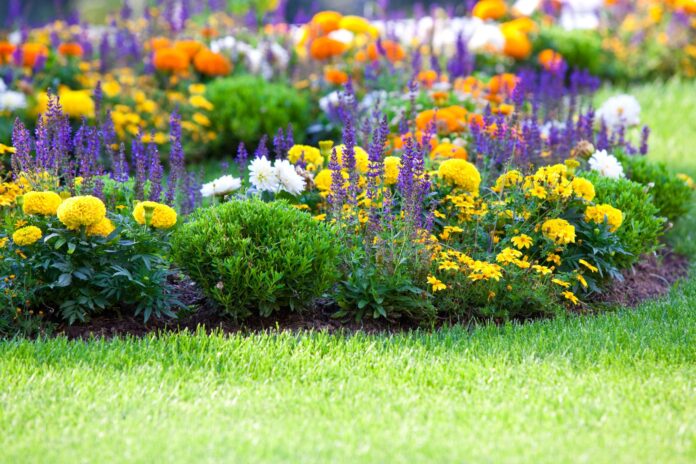| ALABAMA A&M UNIVERSITY, Ala. – With their vivacious blooms and array of colors, herbaceous perennials are a garden favorite and a common sight in Alabama. With the proper care, perennials are long-lasting, fairly low-maintenance flowers. While perennials will die back during the winter months, their roots or buds will continue to live just underneath the soil. There are several year-round care and maintenance steps that people can take that will help their perennials thrive.
Soil testing
Soil condition is a crucial component for growing healthy plants. Before planting perennials, conducting a soil test will provide vital information on the pH and fertility of the planting location. Perennials thrive in a soil pH acidity balance of 6.0 to 7.0.
Rudy Pacumbaba, an Alabama Extension home grounds, gardens and home pests specialist, said adding nutrients to the soil before planting may be necessary.
“Amending the soil regularly may be necessary because of the depletion of nutrients from other plants and rainwater,” Pacumbaba said.
After performing a soil test and adding needed amendments, perennials will not require frequent fertilization. In fact, over-fertilization could produce excessive vegetation growth with few flowers.
“Fertilizers with lower formulations are sufficient unless otherwise indicated by a periodic soil test,” he said.
Planting conditions
After ensuring proper soil conditions, it is essential for gardeners to plant the perennials that are appropriate for their region and garden design. Temperature and sunlight are determining factors for which perennials are best to plant.
“Observe how the sun moves across your garden area from morning to dusk to determine whether your perennials will require shade, partial or full sun,” Pacumbaba said.
For information on which perennials thrive best in certain regions based on these factors, reference the United States Department of Agriculture (USDA) Plant Hardiness Zone Map.
When planning a garden design, people should consider how tall the perennials will grow. The taller plants should be placed in the back rows of the garden to ensure the shorter plants have access to sufficient sunlight. Also, the taller plants may need to be staked in early spring to allow plants to grow through or around them.
“Some perennials make good border plants along walkways, while others serve as vibrant focal points around shade trees or as attractions for butterflies or hummingbirds,” he said.
As the perennials continue to grow, try dividing the plants to provide them extra room. In colder regions, the best time to divide the perennials is early spring. In warmer climates with mild winters and hot summers, consider dividing the plants in the fall.
“Make sure the plant looks healthy and that they have four to six weeks to root before the ground freezes,” Pacumbaba said.
Seasonal care
During the summer, weed and water as necessary. Also, make sure to pinch and deadhead plants, cutting off the flower stem below the spent flower and right above the first set of healthy leaves. Cut back where necessary, as well as staking the taller plants.
In the fall, follow the same steps for the summer, but make sure to start dividing and moving plants.
For the winter, continue to water and weed around the perennials. Make sure to add 2 to 3 inches of mulch to the plant site. Lastly, winterize the planting bed after the frost to preserve the bulbs until spring.
In the spring, it is important to retest the soil. Cut back all tall ornamental grass, begin to gradually remove any winter protection and begin removing weeds and clearing the edges. Thin and divide the plants to allow room for growth while also pinching the plants back. Lastly, prepare stakes and support cages in the late spring.
More information
With these year-round preparations, perennials should be beautiful, low maintenance plants to be enjoyed for years. More information is in the content piece “Keeping Perennials Healthy All Year.” For more information on gardening, visit the Alabama Extension website www.aces.edu. |






























